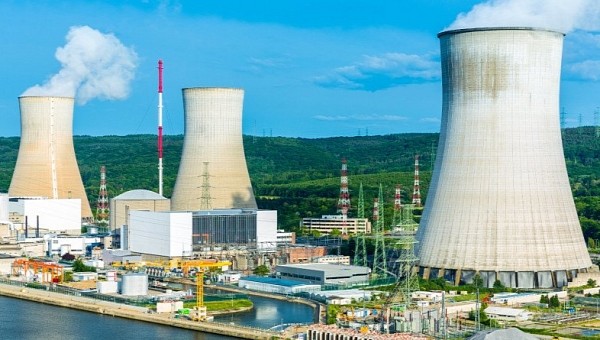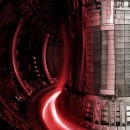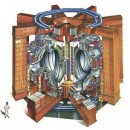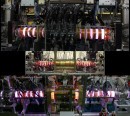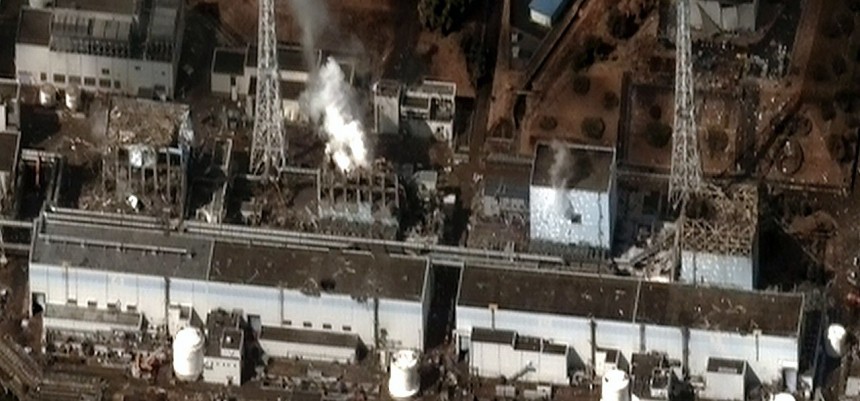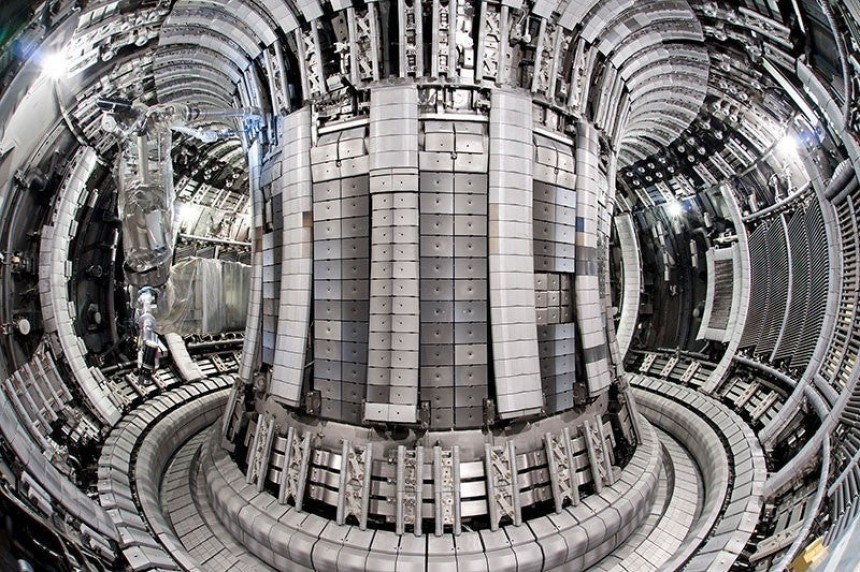Japan is a force to be reckoned with. You wouldn't have guessed it if most history textbooks ended in September 1945. But nearly everything that happened afterward was nothing short of miraculous, despite some not-so-smooth sailing at times. That's as true of Japan's nuclear energy sector as it is for Honda, Nissan, or Toyota. At least before March 2011, that is.
But according to reports from NPR, Japan has recently backtracked a substantial amount of the anti-nuclear political sentiment the nation harbored in the years following the Fukushima Daiichi nuclear disaster. The blame for the disaster was ultimately placed on a colossal 9.1-magnitude earthquake and not the fault of gross negligence, unlike other major nuclear accidents like Chornobyl (Chernobyl), for instance.
That didn't stop the Japanese Prime Minister Naoto Kan's government and, later, Shinzo Abe's from promising to phase out Japan's nuclear fission infrastructure by the 2030s. Just in time for the rest of the world to phase out internal combustion cars in favor of battery EVs around the same period. But with the 2030s now a fair bit closer to us than in 2011, Japan, like the U.S. and Europe, is whistling a different tune when it comes to nuclear infrastructure.
Worldwide microchip and energy shortages caused by the global health crisis have undoubtedly played a vital role in this profound change in attitude. According to NPR, as many as ten Japanese nuclear power stations shut down post-Fukushima have passed safety inspections and have been permitted by the Japanese parliament to commence once again.
Twenty-seven Japanese nuclear-fission reactors in total have applied to have their operational licenses reinstated. Plans are in place for a stringent series of year-by-year safety checks to ensure power stations are safe to continue operations. Though many Japanese plants use old-fashioned generation-II fission reactor cores, Japan's energy planners seem convinced they have a viable strategy to avert disaster in the future.
Currently, only seven percent of Japan's total electricity generation comes from nuclear fission. By comparison, the European Union's total nuclear energy generation accounts for up to a quarter of its production. That figure is roughly 20 percent in the United States and 15 percent in Canada. That's right. The Canadians supply double the percentage of their population with nuclear energy than Japan. Though the population difference no doubt plays a role as well.
In a small, somewhat isolated island nation with not much of any oil underneath it and surrounded by people who openly wish to crush them, it's not hard to see how a health crisis became a tipping point for Japan. The nation chose to move past the Fukushima meltdown as much as possible towards a safer, more stringently regulated future. All in hopes of reaching even a percentage closer to supplying as much fission energy as the Europeans, Americans, and Canadians.
But what would a Japanese nation with a 20-percent nuclear stake in their total energy output look like? Well, this depends on several things going forward. Firstly, the narrative around nuclear energy is remarkably different than it was even a month ago. Thanks to the National Ignition Facility in California, USA, humanity might be on the brink of harnessing nuclear fusion for the first time.
On December 5th, 2022, the NIF reached what's referred to as scientific breakeven. A point where the level of energy produced by a fusion reaction equals or exceeds the level of power needed to generate the reaction. Like nuclear fission, there are more than a few working concepts scientists use to experiment with nuclear fusion. There are plenty of choices for nuclear fuel as well. Be it Helium-3, Deuterium, or even ultra-rare elements like Tritium, of which less than ten kilograms exist in global reserves.
Landmark European and North American fusion experiments like the Joint European Taurus (JET) program's Tokamak reactor and the American NIF's laser-based inertial confinement reactor are titans in their research fields. But if any nation could mimic their success levels on their own, it would likely be Japan. In fact, nuclear fusion research has occurred at Mitsubishi's Heavy Industry division since the mid-1950s.
Their unique brand of magnetic field fusion was dubbed the Heliotron program. Over nearly seven decades, Mitsubishi engineers developed novel Plasma Vacuum Vessels that could theoretically contain an immensely hot fusion reaction. Since 2007, the bulk of Mitsubishi's Nuclear fusion research has been done under the ITER fusion research coalition based in Saint-Paul-lez-Durance, France.
Mitsubishi delivered four massive electromagnetic containment coils to the sight between 2020 and 2021. It was a stark sign that Japan was just as adept at contributing to nuclear fusion research as any nation in North America or Europe. How quickly Japan could turn a combination of fission and fusion technology into 20 percent of their total energy yield on par with the West is anyone's guess.
But remember, Mitsubishi is one of the dozens of private Japanese companies tasked with solving their nation's energy issues. Companies like Toshiba, Cannon, and Hitachi among others. One thing's for sure, the nation that builds the world's most dependable cars and trucks will be a key player in a global fossil fuel-free future. The world has plenty of EVs to charge. This is perhaps the only way to ensure the world can meet demand.
That didn't stop the Japanese Prime Minister Naoto Kan's government and, later, Shinzo Abe's from promising to phase out Japan's nuclear fission infrastructure by the 2030s. Just in time for the rest of the world to phase out internal combustion cars in favor of battery EVs around the same period. But with the 2030s now a fair bit closer to us than in 2011, Japan, like the U.S. and Europe, is whistling a different tune when it comes to nuclear infrastructure.
Worldwide microchip and energy shortages caused by the global health crisis have undoubtedly played a vital role in this profound change in attitude. According to NPR, as many as ten Japanese nuclear power stations shut down post-Fukushima have passed safety inspections and have been permitted by the Japanese parliament to commence once again.
Twenty-seven Japanese nuclear-fission reactors in total have applied to have their operational licenses reinstated. Plans are in place for a stringent series of year-by-year safety checks to ensure power stations are safe to continue operations. Though many Japanese plants use old-fashioned generation-II fission reactor cores, Japan's energy planners seem convinced they have a viable strategy to avert disaster in the future.
In a small, somewhat isolated island nation with not much of any oil underneath it and surrounded by people who openly wish to crush them, it's not hard to see how a health crisis became a tipping point for Japan. The nation chose to move past the Fukushima meltdown as much as possible towards a safer, more stringently regulated future. All in hopes of reaching even a percentage closer to supplying as much fission energy as the Europeans, Americans, and Canadians.
But what would a Japanese nation with a 20-percent nuclear stake in their total energy output look like? Well, this depends on several things going forward. Firstly, the narrative around nuclear energy is remarkably different than it was even a month ago. Thanks to the National Ignition Facility in California, USA, humanity might be on the brink of harnessing nuclear fusion for the first time.
On December 5th, 2022, the NIF reached what's referred to as scientific breakeven. A point where the level of energy produced by a fusion reaction equals or exceeds the level of power needed to generate the reaction. Like nuclear fission, there are more than a few working concepts scientists use to experiment with nuclear fusion. There are plenty of choices for nuclear fuel as well. Be it Helium-3, Deuterium, or even ultra-rare elements like Tritium, of which less than ten kilograms exist in global reserves.
Their unique brand of magnetic field fusion was dubbed the Heliotron program. Over nearly seven decades, Mitsubishi engineers developed novel Plasma Vacuum Vessels that could theoretically contain an immensely hot fusion reaction. Since 2007, the bulk of Mitsubishi's Nuclear fusion research has been done under the ITER fusion research coalition based in Saint-Paul-lez-Durance, France.
Mitsubishi delivered four massive electromagnetic containment coils to the sight between 2020 and 2021. It was a stark sign that Japan was just as adept at contributing to nuclear fusion research as any nation in North America or Europe. How quickly Japan could turn a combination of fission and fusion technology into 20 percent of their total energy yield on par with the West is anyone's guess.
But remember, Mitsubishi is one of the dozens of private Japanese companies tasked with solving their nation's energy issues. Companies like Toshiba, Cannon, and Hitachi among others. One thing's for sure, the nation that builds the world's most dependable cars and trucks will be a key player in a global fossil fuel-free future. The world has plenty of EVs to charge. This is perhaps the only way to ensure the world can meet demand.
